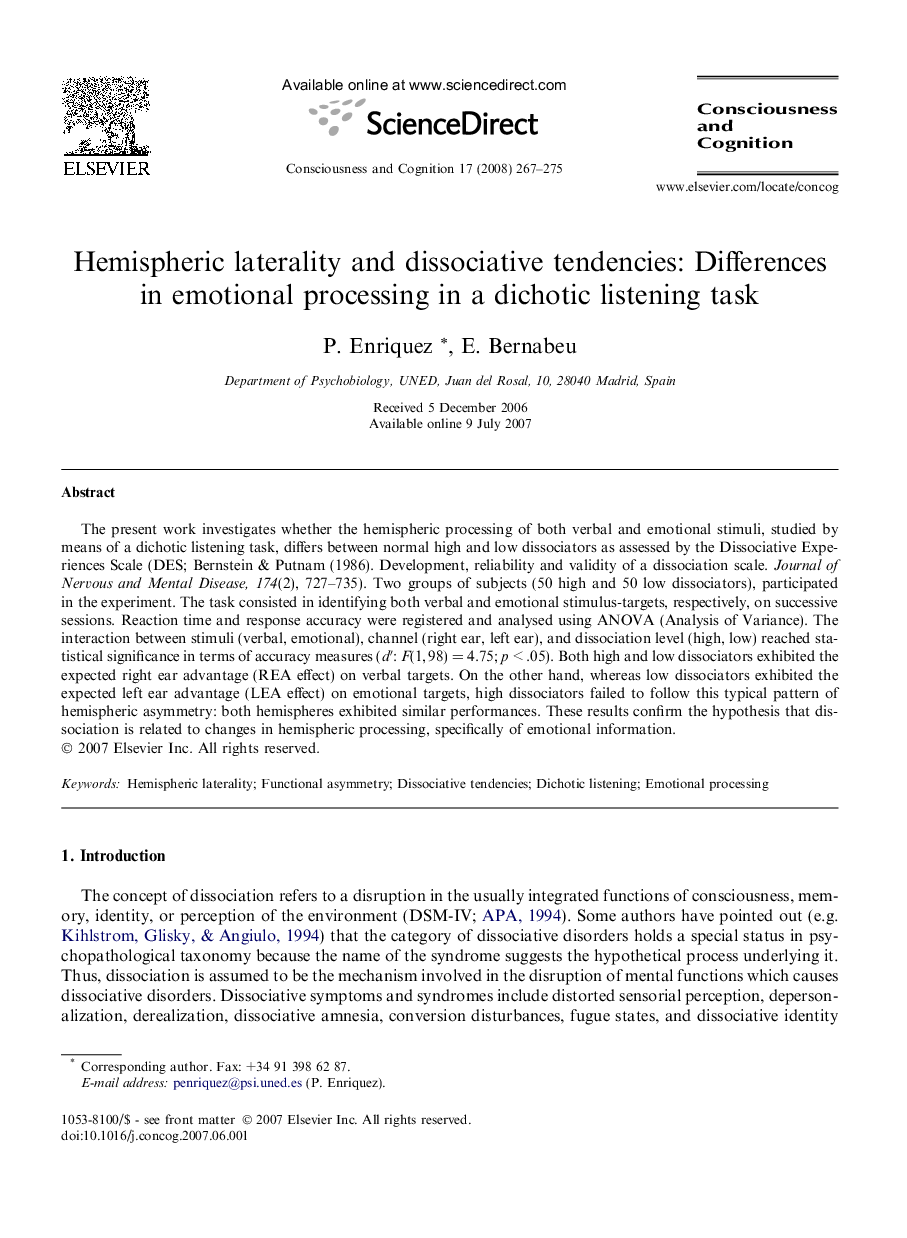| Article ID | Journal | Published Year | Pages | File Type |
|---|---|---|---|---|
| 928100 | Consciousness and Cognition | 2008 | 9 Pages |
The present work investigates whether the hemispheric processing of both verbal and emotional stimuli, studied by means of a dichotic listening task, differs between normal high and low dissociators as assessed by the Dissociative Experiences Scale (DES; Bernstein & Putnam (1986). Development, reliability and validity of a dissociation scale. Journal of Nervous and Mental Disease, 174(2), 727–735). Two groups of subjects (50 high and 50 low dissociators), participated in the experiment. The task consisted in identifying both verbal and emotional stimulus-targets, respectively, on successive sessions. Reaction time and response accuracy were registered and analysed using ANOVA (Analysis of Variance). The interaction between stimuli (verbal, emotional), channel (right ear, left ear), and dissociation level (high, low) reached statistical significance in terms of accuracy measures (d′: F(1, 98) = 4.75; p < .05). Both high and low dissociators exhibited the expected right ear advantage (REA effect) on verbal targets. On the other hand, whereas low dissociators exhibited the expected left ear advantage (LEA effect) on emotional targets, high dissociators failed to follow this typical pattern of hemispheric asymmetry: both hemispheres exhibited similar performances. These results confirm the hypothesis that dissociation is related to changes in hemispheric processing, specifically of emotional information.
